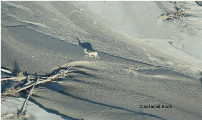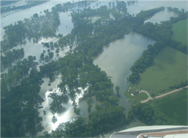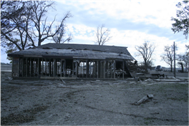Agriculture Working Group
Lead:
Craig Derickson, Nebraska State Conservationist with the USDA Natural Resources ConservationMission:
The Agricultural Working Group was established to identify and prioritize actions relative to the agricultural land and agricultural interests following the flooding in the Missouri River Basin. The Agricultural Working Group will provide a centralized “clearing house” of timely and useful information to landowners who suffered damage to their agricultural land during the Missouri River flooding. During this time of recovery, it is critical landowners and operators have access to all of the facts and information so they can make decisions that are best for the future of their operations.The initial list of priority items for the Agricultural Working Group is as follows:
- Prioritize and optimize access to federal and state recovery program opportunities for repairing damaged agricultural lands and rural communities;
- Explore concerns, opportunities and timelines for insurance and risk management issues, including USDA crop insurance and FEMA property insurance issues;
- Explore opportunities for non-structural alternatives to costly repairs to agricultural lands and floodplain areas, including conservation easements through a number of government and non-government entities, and;
- Coordinate dissemination of damage assessments and reports to agricultural lands, tribal lands, stream banks, rural communities, levees and other flood impacted resources.
Action items identified by the Agricultural Working Group include:
- Develop a Fact Sheets on specific programs to inform the agricultural community about available assistance to restore agricultural land (i.e., Conservation Reserve Program, Wetlands Reserve Program, etc.);
- Provide information to landowners regarding regulatory and permit issues regarding recovery and construction activities, a flow chart for decision-making, and non-structural alternatives to costly repairs to ag land damaged by the floods;
- Monitor the status of federal supplemental bills to provide disaster funding to USDA’s Emergency Conservation Program and Emergency Watershed Program, and;
- Pursue immediate and pro-active actions to market information about other applicable programs that can provide needed technical and financial resources to agricultural interests in the post-flood recovery period.
Working Group Products
Flood Recovery Options for Agricultural LandFEMA's NFIP Levee Regulations vis-à-vis Levee Damage and Repairs
NRCS Guidance for Wetland Compliance during Post-Flood Recovery Activities Iowa • Nebraska • South Dakota • North Dakota - Montana • Kansas • Missouri
Farming after the Flood Webinar
Farmer Perspectives, Agency Resources Learn about flood recovery resources and programs available through NRCS, FSA, RMA, and the Army Corps of Engineers in a multi-state webinar recorded December 14 and now available online.
Wetlands Reserve Program Fact Sheet
The Wetlands Reserve Program (WRP) is a voluntary program to restore, protect and enhance wetlands on private property. It is an opportunity for landowners to receive financial incentives to restore wetlands that have been converted to agriculture production or have been altered by multiple flood events.









